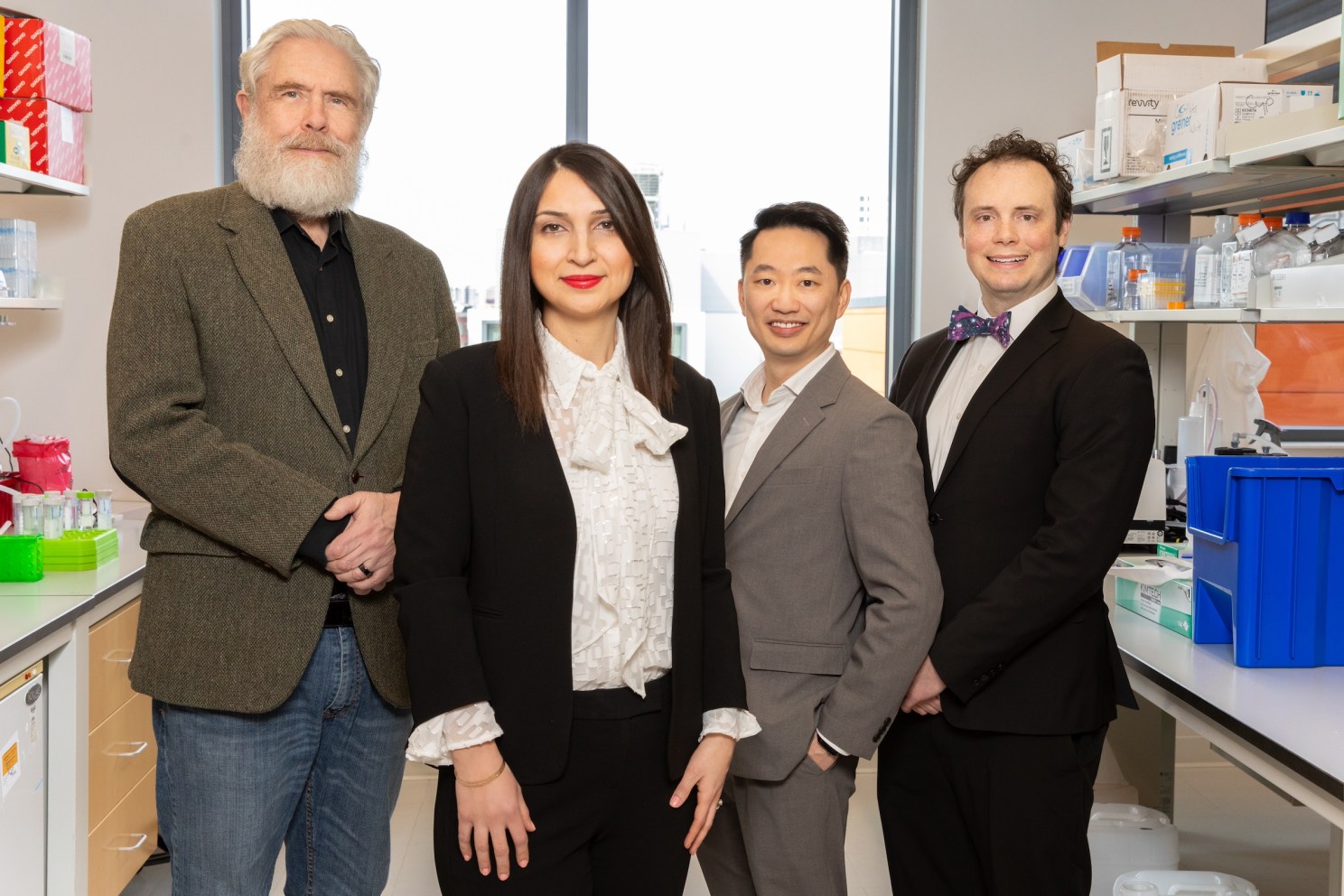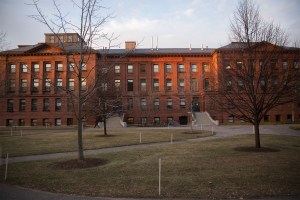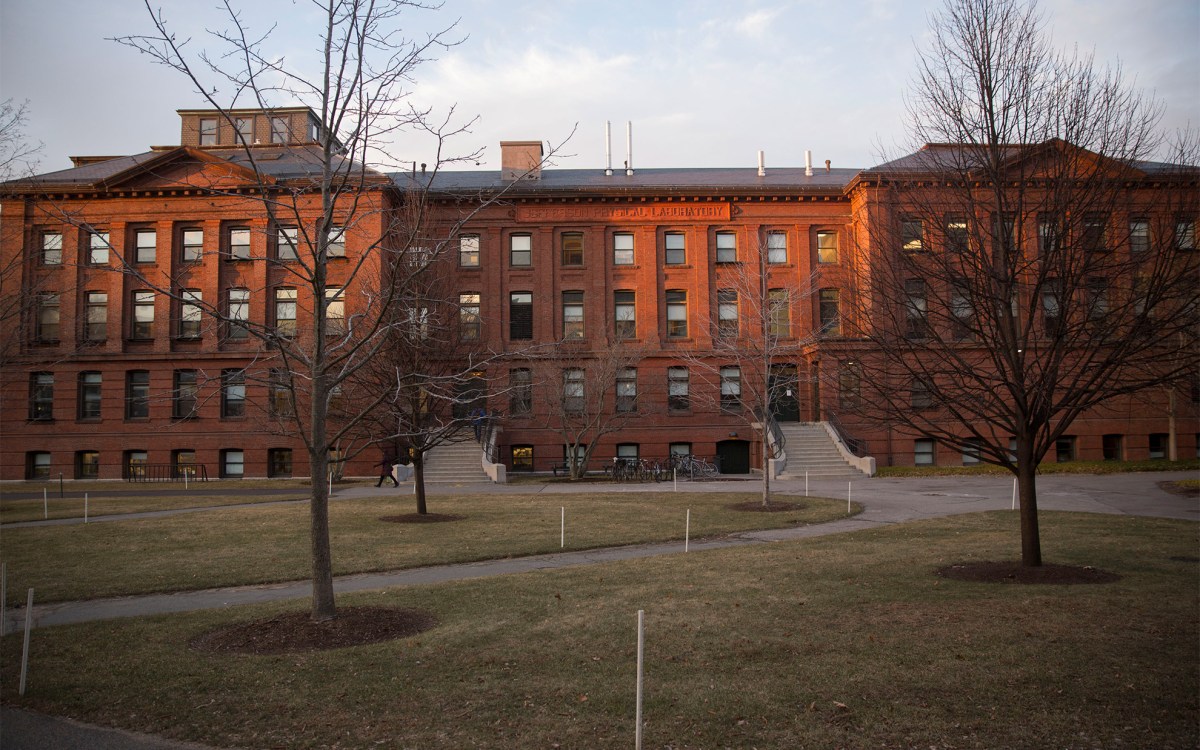From lab to startup, Harvard research team pioneers cell therapy at warp speed

Professor George Church and co-founders Parastoo Khoshakhlagh, Alex Ng, and Cory Smith.
Photo by Marissa Fiorucci
It was a moment Parastoo Khoshakhlagh vividly recalls. At the time, she was a postdoctoral fellow in Professor George Church’s lab at Harvard Medical School, working to rapidly create oligodendrocytes — the cells responsible for forming the brain’s protective membrane around nerve cells — in just four days, a process that typically takes weeks to months. The experiment had a personal element for the research team; the induced pluripotent stem cells (iPSCs) they were working to transform were derived from George Church himself.
The excitement peaked late one evening when Khoshakhlagh rushed to show Church the results. Holding up her laptop to display the newly formed myelin sheaths wrapping around neurons, she exclaimed, “George, look at your myelin! This is how your brain looks!” Church’s delight was immediate and infectious, encapsulating the collaborative energy that defined the lab’s culture.
That moment confirmed Khoshakhlagh and Alex Ng, another postdoctoral fellow in the Church Lab, in their belief that they could revolutionize cell therapies — making them faster, more efficient, and more affordable across a range of therapeutic areas. The excitement and energy didn’t fade as the research team continued to develop the technology. Earlier this fall, GC Therapeutics launched with $75 million in capital raised to translate the science into new stem cell-based medicines for gastrointestinal, immunological, and neurological diseases.
The birth of a revolutionary technology
The core innovation that led to GC Therapeutics is its ability to differentiate induced pluripotent stem cells into target cell types in just four days, with up to 99 percent efficiency. This starkly contrasts existing methods that take weeks or even months, often with much lower efficiency. “We asked ourselves, how can cell type A become cell type B?” Khoshakhlagh explains. The team found that the answer lay in identifying and manipulating the ‘master knobs’ or transcription factors that define cell fate.
Ng elaborates, “We had to build a collection of these master knobs and deliver them to stem cells without compromising their integrity.” The team also integrated machine learning to predict and control cell differentiation. “We have a landscape exploration mode where we can test these master knobs for the first time in the field,” Ng says, emphasizing the novelty and potential of their approach.
The Blavatnik Biomedical Accelerator (BBA) played a crucial role in helping the research team launch their promising idea into a tangible reality by providing a pilot grant. “This grant was essential for developing the fundamental technology of building the transcription factor library, which allowed the team to create a version 2.0 of their technology,” explains Curtis Keith, chief scientific officer of the BBA. “They had an idea and needed funding to support them in pursuing that idea,” Keith explained, highlighting the importance of the pilot grant in laying the groundwork for future success.
The progress made with the pilot grant led to a larger development grant from the BBA. This subsequent funding focused on refining the technology and identifying specific cell types for therapeutic applications, such as oligodendrocytes for multiple sclerosis. This project phase involved technical advancements and animal studies to provide proof of concept for potential therapeutic applications. The BBA committee, composed of top-tier investors and experts, recognized the team’s entrepreneurial potential and was eager to help advance their journey. “They heard Alex and Parastoo present the prospective societal impact with passion, and they were convinced that this was worth continued support from the BBA,” Keith said.
The result was the world’s first platform for delivering iPSC-based medicines in a single step — 100 times faster, more efficient, and of higher quality than traditional methods, all at a lower cost. The TFome platform can determine the optimal combination of transcription factors to transform stem cells into virtually any cell type. The team explains that, for the first time, a single manufacturing process can generate various cell types by adjusting specific genes, unlike traditional developmental biology approaches, which require unique, end-to-end processes for each cell type. The research was published in Nature Biotechnology, and the team started working with Harvard’s Office of Technology Development to license the technology for further development.





